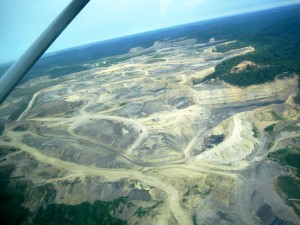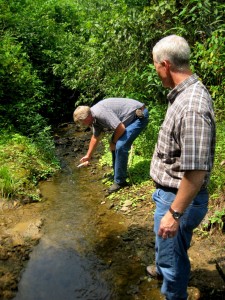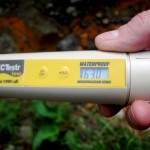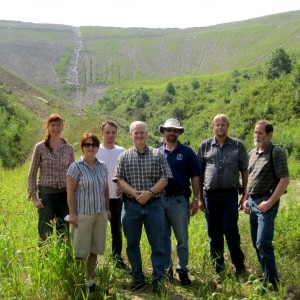
On Tuesday I went to the town of Hazard in Perry County, Kentucky.
It’s a surreal-looking place, if you get up out of the valley onto any viewpoint the panorama that should be rolling hills stretching into the horizon, is missing something. The hill tops have disappeared. It’s as if the landscape is a jigsaw puzzle missing some vital pieces.
This is because over 20% of the surface of the entire county has been strip-mined for coal.
My viewpoint is excellent as I am taken up into the sky by SouthWings to get an aerial perspective. In the small plane with me is Stanley Meiburg, Regional Administrator for the Environmental Protection Agency (EPA).

After the short flight, Stanley and other EPA staff meet with local community members, who have been brought together by Kentuckians for the Commonwealth. They share their experiences of living with the impacts of mountaintop removal (MTR) mining: John shares the scientific results of testing the water from the creek by his home and asks how permits can be issued when the water quality is already degraded, McKinley speaks of his family’s water supply “running black”.
The EPA staff talk about how their approach to mine permitting is changing, particularly the way that they communicate and coordinate with the many other federal and state agencies involved in regulating the coal industry’s practices.
After lunch, we head out to the community of Handshoe in Floyd County to see a stream where there has not been any surface mining, we stop there briefly to do a conductivity test using Rick Handshoe’s conductivity meter. The meter reading tells us the stream’s conductivity level is over 600 microSiemens per centimeter. Rick tells us this is double the  reading he took two days previously and I become nervous for the future of the minnows in this stream. (The EPA recently identified a conductivity benchmark of 300 microSiemens per centimeter that protects 95% of the genera of aquatic organisms living in streams in central Appalachia.)
reading he took two days previously and I become nervous for the future of the minnows in this stream. (The EPA recently identified a conductivity benchmark of 300 microSiemens per centimeter that protects 95% of the genera of aquatic organisms living in streams in central Appalachia.)
We walk up the valley and take conductivity readings on several tributary streams. Alarmingly, one of them has a conductivity reading higher than the upper limit of Rick’s meter. There are no minnows swimming here, only a dead crawfish.
We check out the Raccoon Creek settlement pond, which has been a cause of concern to the community for a number of years.
Our final destina tion of the day is a valley fill, with a stream running at the bottom. This stream runs orange and black and the conductivity level again reads over the meter’s range.
tion of the day is a valley fill, with a stream running at the bottom. This stream runs orange and black and the conductivity level again reads over the meter’s range.
It’s been an eye-opening day for me. I’m curious to know what impact the day has had on the EPA staff.
The mountain community members appreciated the visit and being able to show first-hand the water degradation, flood risk and pollution. These situations that they have been talking, writing and protesting about, to the EPA staff who have the authority to act, and stop mountaintop removal mining companies from treating the waterways and communities of Appalachia as a dumping ground.